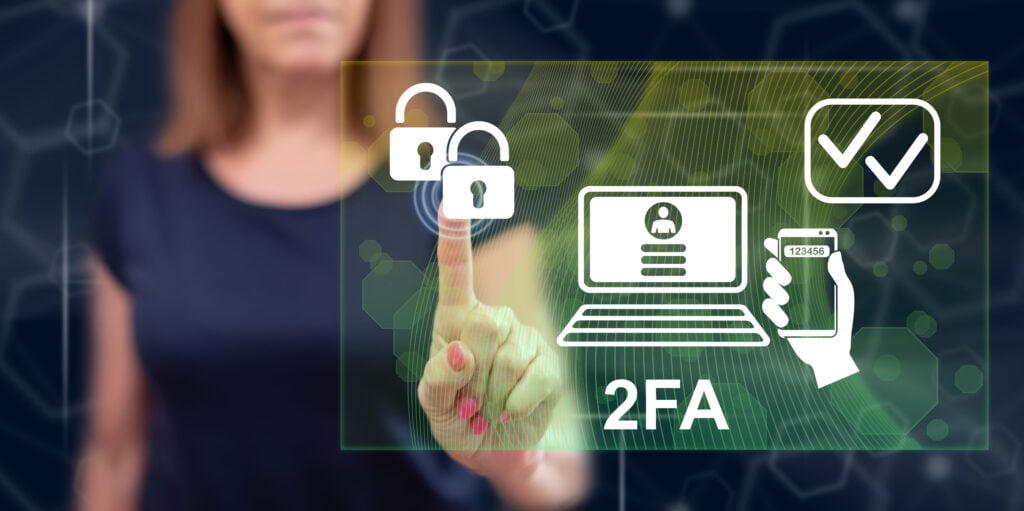
The Essential Guide to Two-Factor Authentication (2FA)
In an era where cyber threats are becoming more sophisticated, ensuring online security is paramount. One of the most effective ways to protect your digital identity is through Two-Factor Authentication (2FA). This guide will demystify 2FA, explore its evolution, and explain why it’s essential for both individuals and businesses.
What is 2FA?
Two-Factor Authentication, commonly abbreviated as 2FA, is an extra layer of security used to ensure that people trying to gain access to an online account are who they say they are. First, a user will enter their username and a password. Then, instead of immediately gaining access, they will be required to provide another piece of information. This second factor could come from one of the following categories:
- Something you have: A physical device, like a smartphone, security token, or a card.
- Something you are: Biometrics, such as fingerprints or facial recognition.
By combining two different types of authentication, 2FA makes it significantly harder for potential intruders to gain access to an account.
The Evolution of 2FA
Token-Based Systems
Initially, 2FA systems relied heavily on hardware tokens. These small devices generate a unique code at fixed intervals, which users must enter in addition to their password. While highly secure, these systems were often cumbersome and expensive, particularly for large-scale deployments.
SMS and Email Codes
The next stage in the evolution involved sending verification codes via SMS or email. While more convenient than hardware tokens, these methods have shown vulnerabilities. For example, SMS messages can be intercepted, and email accounts can be hacked.
App-Based Authentication
Apps like Google Authenticator and Authy represent the modern iteration of 2FA. They generate time-based one-time passwords (TOTPs) that are more secure than SMS codes but still relatively user-friendly.
Biometrics
Biometric authentication, such as fingerprint scans and facial recognition, offers a seamless user experience while providing high security. However, concerns about privacy, data storage, and spoofing attacks remain.
Pros and Cons of Various Methods
- Hardware Tokens: Highly secure but expensive and inconvenient.
- SMS/Email Codes: Convenient but vulnerable to interception.
- App-Based Authentication: Secure and convenient but requires a smartphone.
- Biometrics: Seamless and secure but raises privacy concerns.
Why Adopt 2FA?
Enhanced Security
The primary advantage of 2FA is enhanced security. By requiring two forms of identification, it drastically reduces the risk of unauthorized access. This is crucial not just for personal accounts but also for businesses, which are often targets of sophisticated cyber-attacks.
Misconceptions About 2FA
Many people believe that 2FA is inconvenient or only necessary for high-security situations. However, modern implementations are increasingly user-friendly. For example, app-based authenticators and biometric methods offer quick and seamless authentication experiences.
Everyday Applications
2FA is not just for your bank account or corporate email. It can be used for social media accounts, online shopping, and even gaming platforms. By integrating 2FA into everyday applications, users can significantly enhance their online security with minimal effort.
The Future of 2FA
Emerging technologies like Fast Identity Online (FIDO) aim to make online authentication even more secure and convenient. FIDO protocols leverage public key cryptography and biometric data to provide robust security without the need for traditional passwords.
Responsibilities and Awareness
While technology continues to evolve, the responsibility for securing digital identities lies with both users and service providers. Users must adopt 2FA wherever possible and stay informed about the latest security practices. On the other hand, service providers should offer 2FA options and educate their users on the importance of multi-factor authentication.
Conclusion
Two-Factor Authentication is not just a buzzword; it’s an essential component of modern digital security. By understanding its evolution, benefits, and future, both individual users and business owners can make informed decisions to protect their online identities.
Don’t wait for a cyber-attack to underline the importance of robust security measures. Make 2FA a standard practice in your digital life today.
For more insights and personalised recommendations on implementing 2FA in your business, feel free to contact us. Secure your digital future now!
